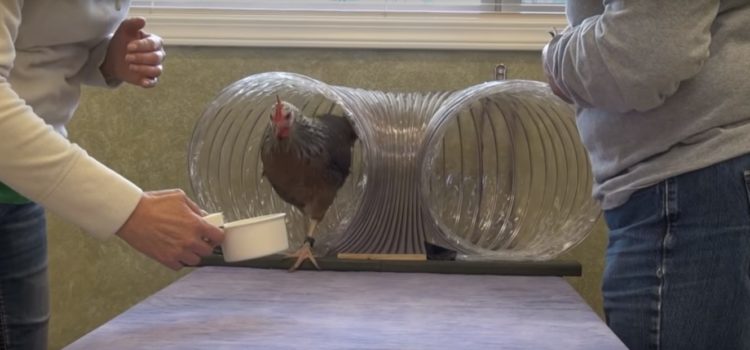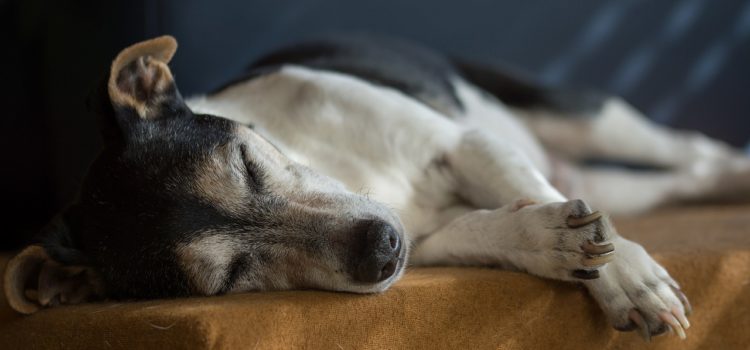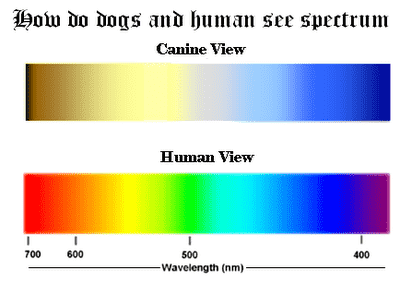By by TTEAM and TTouch Instructor Debby Potts, TTEAM Connections Newsletter April-June, 2003 Pp. 24-25
In most of my workshops I ask how many people have trouble cutting their dogs’ toenails. Usually a lot of hands go up. It can be something that people dread, both because of how many dogs hate having their toenails cut, and how afraid people are of hurting their dogs. It becomes something to do quickly, just to get it over with, often making the next time that much more difficult.
TTouch can be a great help in making cutting toenails easier and safer for both cats and dogs. I’m going to describe what I recommend for dogs, the same process would apply to cats. In this demo or discussion, I am not only talking about toenails, I am also describing the way we chunk things down and listen to the animals any time we are working with something that is difficult for them.
The first question is — where can you start? If you can’t easily handle your dog’s feet, the issue is not just toenails; it is trust and comfort with the feet. You may have to start with Python Lifts on the shoulder, and gradually work toward the feet. Abalone or Lying Leopard TTouches with the Python Lift (insert: see bottom of article how to do these touches) will bring more awareness to the area as well as bring a release of tension, It may be necessary to start with the back of your hand, with a wand, or with something covering your hand like a sheepskin mitt or a sock. The important thing is to listen to your dog. Let him know he has influence over what you are doing. It is surprising how quickly trust is built if you change something when your dog is concerned. Your dog may act like his feet are ticklish. Ticklishness is the result of tension. When the tension is gone, he won’t feel ticklish any more. You might find that having your dog wear a t-shirt or body wrap (insert: see body wrap article) helps his focus and balance.
It is important to be breathing, balanced and relaxed while you are working with your dog. Remember to hold the foot softly and if your dog pulls his foot back, go with the movement rather than getting involved in a tug of war. Struggling only makes things worse. If you try to hold the foot still, not only are you creating resistance to your dog having his foot back, you will also find that you are squeezing his paw. It can be frightening or painful. I always say that it takes two to fight, and if you don’t participate, there is no battle.
When you can do TTouches all over your dog’s feet, including between the pads, it is time to start working with the nails. This process could be one session, or it could be several. Shorter, more frequent sessions will often help you progress more quickly. If you hear yourself say, Wow, this is going really well,andnbsp;check to see if this is a good stopping point. If your dog’s expectation is that this is going to be difficult, it will be a pleasant surprise if you stop while things are easy. If you are really eager to get this done, it will take longer, if you can see that the process is more important than the result and let go of the outcome, you may be surprised at how quickly you have a happy dog with short toenails.
Giving your dog different experiences with having his toenails manipulated can be helpful. You might do TTouches on them or gently move them in circles. Using your fingernail to scrape the end of your dog’s nail creates sound and vibration that can be a helpful approximation of actual cutting.
When you bring the clippers out, some dogs will change their minds about having their feet handled. I have a theory that some dogs believe that their wonderful, loving human companions have something weird happen to them when they get near nail trimmers. Normal loving people suddenly want to invite a couple of friends over to sit on the dog and do scary things with their feet. I call it Berserk Human Nail Trimmer Syndrome. It is important that your dog know you don’t suffer from this malady and that the trust you have built so far still holds true with trimmers in your hand. You may need to start with just having them nearby while you repeat some of the above steps. Offering food from your hand with the clippers can help. Sometimes I have the clippers in my hand and do TTouches with the back of my hand, gradually working to do TTouches with the clippers themselves. If you are using a grinder, it will also be necessary to help your dog feel safe with the noise and vibration.
Before you cut the first nail, I suggest you have a dress rehearsal. Gently hold the paw, remembering to keep your arm soft so that if the dog moves you can follow the movement. Be sure you are breathing and relaxed with a positive picture of what you want. Go through the motions of cutting the nail, but have the clippers just off the end of the nail so you’re not actually cutting yet. This way the dog can hear the sound and see what it will be like when you do cut the nail. It is also a time for you to check your hands to be sure that as you squeeze the cutters, your other hand isn’t squeezing the paw too. It is easy for your hands to mirror each other if you aren’t aware of what you are doing. You can differentiate your hands just by bringing your attention to what you are doing.
If that goes well, you are ready to actually cut the nail. Work in an area and in a body position that is comfortable for your dog. Some dogs are more comfortable with the foot taken back like you might pick up a horse’s foot than bringing it forward, especially if they have pain in their body or have poor balance. Take off a tiny sliver at first. Taking off small pieces if you are concerned about hurting your dog will make it safer. If you exhale as you are cutting, it will soften your hands and help your dog relax. Cutting the nails after a bath or a walk in wet grass will make the nails softer and easier to cut. Dirty nails dull the blades of your cutter so make sure the feet are mud free. With a grinder, it is better to grind when the nails are dry. Also, a nylon stocking over the foot with the nails protruding will help prevent long hair from being caught in the tool.
Quietly reinforce your dog as you work. I like to use frequent treats if the dog isn’t over-excited about the food. Being too excited makes it hard to calm the dog down to do more nails. The first time you do this, again stop before it is too hard for your dog to concentrate and be patient.
If you cut enough toenails, it is likely that you will eventually quick one.andnbsp;Don’t panic. If you are calm (while you apologize) the dog is less likely to overreact. It might be a good time for extra treats; a few TTouches and deciding if this is a good break time.
This process isn’t just about toenails. It’s about listening to your dog and working through something difficult together in a way that builds trust and partnership. Toenail trimming is a wonderful opportunity to use TTouch to enhance your relationship with your dog.
~ ~ ~ ~ ~ ~ ~ ~ ~ ~ ~ ~ ~ ~ ~
How to do the Lying Leopard Ttouch:
- Start by holding up both hands in a slightly cupped position together.
- Let the heel of your palms touch and the pads of all your fingers touch. (see picture)
- Where your 4 fingers are touching is what you will use to make the Lying Leopard circle.
- Now visualize the face of the clock.
- We want to make a circle and a quarter ONLY, in a clockwise movement.
- Now place one hand on the animal for support and balance and use the other hand to make the circle.
- Rest your hand lightly on the animal, with your thumb a few centimetres from your fingers for support, and start your fingers at the 6 o’clock position, move around the clock by pulling the skin up in a clockwise motion until you’ve done one complete circle and a quarter, which will land you up at 9 o’clock. (Work against gravity andndash; so you will always first pull the skin up)
- Remember to move the skin and not slide over it and always start your 6 o’clock from the ground upwards. It really feels different to end in upward motion rather than down!
- Do ONLY ONE circle in a spot, and then move on to another.
- Keep your fingers and knuckles soft and flexible. If there is tension in your hand or wrist, that tension will go directly into the animal.
- Keep your pressure very light until you know how comfortable the animal is with the touch. Remember that youandrsquo;re activating the nervous system, so you donandrsquo;t need to work on the muscle.
- Keep your hand as an extension on your arm to avoid getting into an awkward position
- While you concentrate, do not forget to breathe!
- Try doing connected circles down the body, keeping them small.
- Afterwards do a long steady stroke to integrate the circles.
- The slower the circle,andnbsp;the more relaxing it is for the dog
- The faster you do the circle the more invigorating it is.
- The more hand-surface you use, the more relaxing and comforting it will feel for your dog.
- We mostly use a pressure number two. A three pressure is the amount of pressure you can apply on your closed eyelid without hurting your eye. A two pressure is just a little less.
The Abalone Ttouch
Place your whole flat hand on the dogs body and your whole hand moves the skin in a circle and a quarter movement, also in a clockwise direction, starting against gravity and thus pushing the skin up, then pulling it down and then ending in the 9 o clock position. All the pointers above for the Lying Leopard above also applies to the Abalone Ttouch.
It is important to remember to only use as much pressure to be able to move the skin over the muscle. The slower the circular movement, the more calming it is. I usually count one-thousand and one, one thousand and two, to indicate my speed.
Phyton lifts
This touch can be done on the dog’s neck, shoulders, back, abdomen and down the legs. It is excellent for improving mobility, relaxation, balance and gait.
When doing this touch on the legs to help with Nail Trimming issues, stand next to your dog. Place your whole hand/s around the dog’s leg. For small dogs you can just use your fingers.
Start at the shoulder and move down the leg towards the toes.
Lift the skin up gently and hold for 2 seconds then gently guide skin back into its original position. If you slide the skin upwards for 4 seconds you, you hold for 2 seconds and then guide the skin back in double the time it took you to lift the skin, thus your down ward motion is 8 seconds. If you lift for 2 seconds, you release down wards for 4 seconds, if you lifted 3 seconds you release for 6 seconds etc. Take care to do a slow and gentle movement, if it is to abrupt, the dog will try to move away. The slow release is important to release any tension in the dog.
One finished with a touch, slide down a few centimeters and do another Python Ttouch until you reach the paws.
For dogs with balance issues i.e. with arthritis or HD, do it whilst the dog standing or lying down.
Once finished working a leg, end it with a long, gentle but firm stroke from the shoulders down towards the toes.
Most importantly when working on the front left you also need to work on the front right leg of the dog, or you could leave the dog feeling unbalanced, the same goes for the hind legs.




Leave a Reply